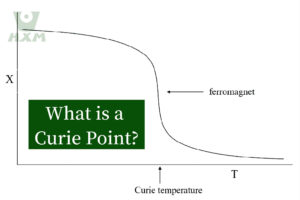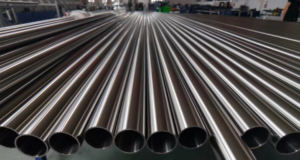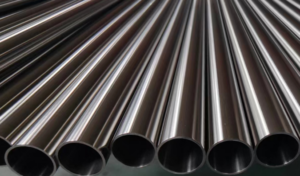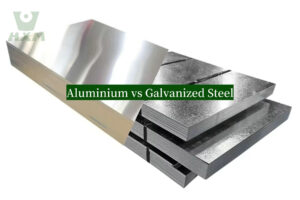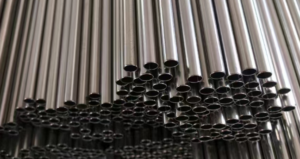What is electroslag remelt?
- August 7, 2024
- 9:09 pm
- 1049
Electroslag Remelting (ESR) is an advanced metallurgical process used to refine the quality of high-performance alloys and steels. This process plays a crucial role in industries where superior material properties are essential, such as aerospace, power generation, and medical implants. By improving the cleanliness, homogeneity, and mechanical properties of metals, ESR ensures the production of components that meet stringent performance standards.
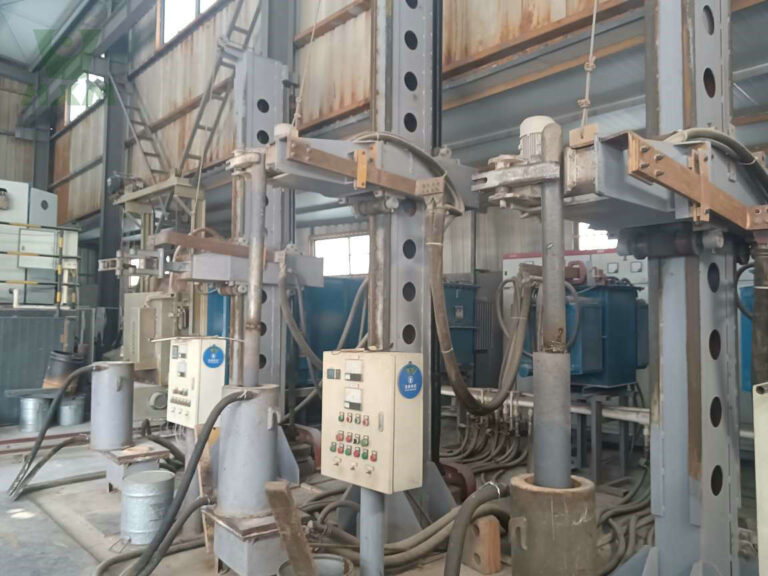
electroslag remelt Process Overview
Electroslag Remelting involves the melting and solidification of a consumable electrode through a molten slag layer. The process is carried out in a water-cooled copper mold, which facilitates controlled solidification of the refined ingot. The key stages of the ESR process include:
- Preparation: The consumable electrode, typically made from a primary cast ingot of the alloy, is prepared and positioned in the ESR furnace.
- Melting: An electrical current is passed through the electrode and the slag, generating heat due to the resistance of the slag. This heat melts the tip of the electrode.
- Refining: As the electrode melts, droplets of molten metal pass through the slag layer, which absorbs impurities and non-metallic inclusions.
- Solidification: The refined molten metal is collected at the bottom of the mold and solidifies in a controlled manner, forming an ingot with a fine and uniform microstructure.
Benefits of Electroslag Remelting
- Improved Purity: The slag layer in ESR acts as a filter, capturing impurities and non-metallic inclusions, resulting in a cleaner metal.
- Enhanced Homogeneity: Controlled solidification leads to a uniform composition and microstructure, reducing segregation and improving overall material properties.
- Superior Mechanical Properties: The refined ingots exhibit enhanced mechanical properties, such as increased toughness, ductility, and fatigue resistance, making them suitable for critical applications.
- Reduced Defects: ESR significantly reduces the presence of defects like porosity and macro-segregation, ensuring the reliability of the final product.
Applications of Electroslag Remelted Materials
- Aerospace: The aerospace industry relies on ESR for the production of turbine blades, engine components, and structural parts that require exceptional strength and fatigue resistance.
- Power Generation: ESR-refined alloys are used in the manufacture of components for gas turbines, nuclear reactors, and other power generation equipment, where high temperature and pressure conditions prevail.
- Medical Implants: The medical field utilizes ESR to produce implants and prosthetics with superior biocompatibility and mechanical performance.
- Tooling and Die Making: High-quality tool steels produced through ESR are essential for manufacturing dies, molds, and cutting tools that demand high wear resistance and toughness.
The Role of ESR in Advanced Alloy Production
Electroslag Remelting is particularly significant in the production of advanced superalloys, such as GH4169 (Inconel 718), used in demanding environments. These superalloys benefit from ESR due to their complex compositions and the necessity for precise control over microstructural features. ESR enhances the properties of these alloys, making them ideal for high-temperature and high-stress applications.
Conclusion
Electroslag Remelting is a vital process in modern metallurgy, offering significant advantages in terms of purity, homogeneity, and mechanical properties. By refining the quality of high-performance metals and alloys, ESR plays a critical role in advancing technology across various industries. Its ability to produce defect-free, high-purity materials ensures that components can withstand the rigorous demands of aerospace, power generation, medical, and tooling applications. As technology continues to evolve, the importance of ESR in producing superior materials will only grow, cementing its place as an indispensable tool in the field of metallurgy.
Electroslag Remelting (ESR) is a specialized process used to improve the quality of metals and alloys. Here are the key steps:
- Preparation: A consumable electrode, typically a primary cast ingot of the alloy, is prepared and positioned vertically in an ESR furnace.
- Initiation: An electric current is introduced, generating heat through the resistance of the slag. The electrode begins to melt from the tip.
- Melting and Refining: As the electrode melts, droplets of molten metal fall through the molten slag layer. The slag acts as a refining medium, absorbing impurities and non-metallic inclusions.
- Solidification: The purified molten metal collects at the bottom of the water-cooled copper mold and solidifies in a controlled manner, forming a refined ingot with a homogeneous and fine-grained structure.
- Cooling and Extraction: The solidified ingot is cooled and removed from the mold, ready for further processing or use.
The remelting process refers to melting and solidifying a metal or alloy to improve its properties. Key remelting techniques include:
- Electroslag Remelting (ESR): Uses a consumable electrode, a molten slag layer, and controlled solidification to produce high-quality ingots with improved cleanliness and homogeneity.
- Vacuum Arc Remelting (VAR): Involves melting a consumable electrode with an electric arc in a vacuum environment, leading to enhanced chemical uniformity and reduced gas content.
- Vacuum Induction Melting (VIM): Uses electromagnetic induction to melt metals in a vacuum, allowing precise control over alloy composition and reducing impurities.
Electroslag Remelting offers several significant advantages:
- Improved Purity: The molten slag absorbs impurities, resulting in cleaner metal.
- Enhanced Homogeneity: Controlled solidification reduces segregation and ensures a uniform microstructure.
- Superior Mechanical Properties: ESR materials exhibit increased toughness, ductility, and fatigue resistance.
- Reduced Defects: The process minimizes porosity and macro-segregation, enhancing the reliability of the final product.
- Consistent Quality: ESR produces ingots with consistent and repeatable quality, essential for critical applications.
The electroslag process is a metallurgical technique used to refine metals and alloys by melting a consumable electrode through a molten slag layer. The slag acts as a refining agent, removing impurities and inclusions from the metal. This process enhances the chemical and structural homogeneity of the material, producing high-quality ingots suitable for demanding applications in various industries.
Process Environment:
- VAR (Vacuum Arc Remelting): Conducted in a vacuum environment to minimize gas content and oxidation.
- ESR (Electroslag Remelting): Conducted in an inert or atmospheric environment with a molten slag layer for refining.
Melting Mechanism:
- VAR: Uses an electric arc to melt the electrode.
- ESR: Uses the resistive heating of the slag to melt the electrode.
Applications:
- VAR: Preferred for materials requiring very low gas content and excellent chemical uniformity.
- ESR: Preferred for materials where removing non-metallic inclusions and achieving a uniform microstructure are critical.
ESR in metals stands for Electroslag Remelting, a process that improves the quality of metals by melting and refining them through a molten slag layer. The slag absorbs impurities and inclusions, resulting in a cleaner, more homogeneous metal. ESR is commonly used to produce high-performance alloys and steels with enhanced mechanical properties and reduced defects, making it ideal for critical applications in aerospace, power generation, medical, and tooling industries.
Recent Blog
If you found this article good, feel free to share it on your other social media platforms.

